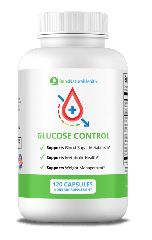- Q: What are some effective tips to urinate after catheter removal?
- Ben's Prostate Healer For Bladder & Prostate Health
- Q: What should I expect after a catheter is removed?
- Q: What are the possible side effects after catheter removal?
- Q: How long does it typically take to urinate normally after catheter removal?
- Q: How long does it take for the bladder to return to normal after catheter removal?
- Q: How can I train my bladder after catheter removal?
- Expert FAQs: Understanding Urination After Catheter Removal, Personalized Tips for Recovery and Comfort
- Conclusion
- Our Medical Review Process
- Our Editorial Guidelines
- Medical Disclaimer
- Source
There are many different types of catheters used in medicine for various purposes. However, we will discuss a urinary catheter, also called Foley’s catheter.
The use of Foley’s catheters is pretty common, especially in critically ill patients or surgical wards. It is inserted in people who cannot pee by themselves. Unfortunately, many of these patients remain on a catheter for quite a long time.
However, when people are on a catheter for a long time, it may cause urinary infections, weakened bladder muscles, and other issues. In addition, many people complain about burning sensations after catheter removal and difficulty peeing. Thus, for many, peeing after the catheter becomes challenging.
Others may have incontinence after a catheter. This is the opposite kind of problem when someone finds it difficult to control peeing, and leakage occurs. Therefore, it is no surprise that many have to relearn urinating after they have their catheter taken out. Keep reading to find out 9 tips to help you urinate after catheter removal.
To provide readers with the most accurate and current medical guidance on tips to urinate after catheter removal, we interviewed Dr. Salman, a licensed medical doctor with expertise in this area. Dr. Salman offered professional insights, directly responding to questions about both what to expect after a catheter is removed male and how to pee after catheter removal female.
All commentary and recommendations are rooted in this direct interview process, ensuring that the content reflects real-world clinical expertise. Furthermore, every article is carefully reviewed and based on medically sourced information, which reinforces the reliability and trustworthiness of the educational material provided.
Get 10% Off Our Products!
- Sign up to our newsletter
- Get Your FREE PSA Lowering Diet Plan
- Be the first to hear about sales and promotions
- Stay up to date on our latest health news
Q: What are some effective tips to urinate after catheter removal?
Dr. Salman answers: Many patients experience difficulty urinating after catheter removal, which is common as your body adjusts to normal urination patterns. It’s not unusual to face urinary hesitancy, stinging, or burning after catheter removal. While medical treatment can address persistent symptoms, most people benefit from some practical strategies. Here are key tips to urinate after catheter removal that support the recovery of bladder function:
1) Listen to the sound of running water while urinating: The sound can relax your pelvic muscles and help overcome urinary hesitancy. Simply turning on the faucet and listening while you attempt to urinate can trigger the brain’s natural response to water, making it easier to go.
2) Go for a walk before attempting to urinate: Instead of heading to the bathroom as soon as you feel the urge, try taking a brief walk. This allows the pressure in the bladder to build, which may lead to a stronger and more natural flow. Also, some individuals experience increased bladder hyperactivity after catheter removal, so movement may help regulate this urge and assist with urination.
3) Rinse your genitals: For those accustomed to rinsing after urination, this practice can serve as a familiar cue, especially helpful for individuals struggling with how to pee after catheter removal. Detailed instructions can be found in resources on how to clean private parts after urination.
4) Consider peppermint oil: Peppermint oil may help relax the bladder sphincter due to its anti-spasmodic properties and minor anti-anxiety effects. For some, inhaling the scent or adding a drop of peppermint oil to the toilet bowl can promote urination, as studies of bladder function suggest.
5) Drink cranberry juice: Cranberry juice is well known for supporting urinary tract health and may prevent recurrent urinary tract infections, which are a risk after catheterization. Its high water content also assists with urine production. For more on this, consult information about cranberry juice benefits and its role in recurrent urinary tract infection prevention.
6) Explore urinary health supplements: After a catheter, risks for both urinary tract infections and bladder stones increase. Natural urinary health supplements can support long-term urinary function. Some can help improve urinary tract health and enhance bladder recovery.
7) Try the Valsalva maneuver: This involves a gentle strain, like the slight push used during defecation or wind instrument playing. By performing a controlled exhale against a closed airway, you can increase intra-abdominal pressure, which sometimes helps initiate urination after catheter comes out. For additional guidance, refer to research that explains this maneuver in detail.
8) Tap your suprapubic region: Gently tapping the area just above the pubic bone can stimulate bladder nerves, triggering urination. This can be particularly effective in women with urination flow problems after catheter removal.
9) Learn relaxation techniques: Anxiety and pain, especially urination pain after catheter removal, can lead to sphincter tightening. Mindfulness, deep breathing, and progressive muscle relaxation techniques can help ease both physical tension and the urge, response pathway, facilitating initial urination after a catheter is removed. This can be especially important for those looking for first urination after catheter tips or seeking ways to help urinate after a catheter is removed.
If you are wondering, “Is it normal to not urinate after catheter removal?”, some temporary hesitancy is common, but notify your provider if more than eight hours have passed since the catheter was removed and you have not urinated, or if you are experiencing severe discomfort.
Ben’s Prostate Healer For Bladder & Prostate Health
Prostate Healer is a safe, proprietary, unique blend of the world’s 9 most powerful prostate healing and rejuvenating herbs.
Ben’s Prostate Healer is formulated to fight against prostate diseases like prostatitis and BPH, protect bladder health, provide symptomatic relief from urinary tract infections, and reduce inflammation.
It works on the prostate, kidney, and bladder simultaneously, coaxing cells gently to resume normal function.
If you’re like many men that use the formula, you’ll see a reduction in the number of times you get up to go to the bathroom to urinate, plus see an improvement in the flow of your urine.

Q: What should I expect after a catheter is removed?
Dr. Salman answers: After removal of the Foley catheter, most individuals resume urination quite normally, especially if the catheter was used for a short duration following straightforward surgical procedures. However, some, especially those who were bedridden for extended periods or fall into special populations such as older adults, may encounter trouble passing urine after a catheter comes out. Common symptoms include hesitancy to urinate, increased frequency due to irritation, or even a burning or stinging sensation.
There may be transient changes in urine color or a burning sensation when peeing. Most of these symptoms are temporary. Yet, it is normal to wonder “how long to urinate after catheter out” and whether symptoms like mild pain are usual. For many, recovery of bladder function after the catheter takes just a couple of days. However, if you experience severe or persistent symptoms, such as dark urine color or fever, contact your healthcare provider promptly.
Q: What are the possible side effects after catheter removal?
Dr. Salman answers: All medical procedures, including catheterization, can produce side effects. Urinary tract infections (UTIs) are the single most common side effect after catheter removal, particularly if the catheter has been in place for extended periods. This risk increases when the device remains post-discharge. Typical symptoms include lower abdominal pain, groin discomfort, fever, chills, shivering, confusion, and trouble urinating, including urination pain after catheter removal. Some individuals may develop post-catheter risks such as frequent cramps, incontinence, or neurogenic bladder dysfunction, which is characterized by poor bladder control or inconsistent flow.
The longer the catheter is in place, the greater the chance for infections or even rare complications like bladder stones, septicemia, pseudopolyps, or urethral trauma. Sometimes, repeated exposure to antibiotics leads to resistant infections, increasing the risk for kidney or severe bladder issues.Symptoms such as frequent bathroom visits, urethral irritation, changes in urine color, or reduced emptying efficiency are also possible. On occasion, an individual may develop a neurogenic bladder. For best recovery, it is important to be mindful of these potential outcomes and engage in recommended follow-up care.

Q: How long does it typically take to urinate normally after catheter removal?
Dr. Salman answers: Typically, most patients will resume normal urination within 48 hours after short-term catheter use. However, if the catheter was in place for an extended period, trouble passing urine after the catheter comes out or developing urination complications after catheter removal becomes more likely. Some may experience issues such as urinary hesitancy or burning sensations, while others may notice more frequent urination.
Recovery time can vary depending on personal factors, including the presence of urinary tract infections or irritation. If you are concerned about how long to urinate after a catheter is out and do not see improvement within two days, consult your doctor. Supportive therapies like natural remedies and pelvic floor exercises can be especially beneficial for those worried about urine flow problems after catheter removal or for those needing additional help to pee after catheter removal.
Q: How long does it take for the bladder to return to normal after catheter removal?
Dr. Salman answers: The bladder’s recovery depends significantly on the length of time the catheter was inserted. For individuals with short-term catheterization (less than 72 hours), about one third return to normal bladder function within a day. However, for those with longer-term catheter use, the majority will require a few days to regain their typical bladder function. If a urinary tract infection is present, the duration may be extended.Chronic or recurrent issues are uncommon but can occur, particularly in those who are older or have underlying health conditions. In general, except for rare cases, you can expect urination after catheter removal to return to normal within several days. However, if you have ongoing difficulties (such as urination pain or difficulty urinating after catheter removal), your physician can provide further evaluation and advice. If you’re struggling, see our earlier tips to urinate after catheter removal for immediate strategies.

Q: How can I train my bladder after catheter removal?
Dr. Salman answers: Training your bladder after catheter removal is essential to restore normal urination patterns and strengthen the pelvic floor. Many face issues such as trouble urinating, urgency, leakage, or even bladder weakness post-catheter. Pelvic floor exercises, such as Kegel exercises, are among the most effective ways to train your bladder after catheter removal, especially after long-term catheterization. These exercises increase the strength and control of the muscles responsible for urination, helping both men and women (refer to what to expect after a catheter is removed male and how to pee after catheter removal female for gender-specific advice).
Core-strengthening exercises, such as planks, abdominal crunches, and the abdominal press, can also aid in regaining bladder control and improving urine flow. For structured guidance, consult resources detailing ways to train your bladder after catheter use. Stay patient, most people regain bladder health with consistent practice, especially when following these effective tips for urination after catheter removal.
Expert FAQs: Understanding Urination After Catheter Removal, Personalized Tips for Recovery and Comfort
Q: What to expect after a catheter is removed male?
Dr. Salman answers: After a urinary catheter is removed in men, the body tries to adjust to urinate normally. Some may experience temporary urinary hesitancy, bladder discomfort, and slight leakage because the urethra and bladder wall became fragile and weak from catheter use. Symptoms typically resolve within 48 hours, though recovery can vary depending on the duration of catheter use.
Weak bladder and urgency
In the first two days, your bladder may feel “weak.” You might notice trouble initiating flow, urgency, or more frequent trips to the bathroom. Medical teams often advise men to urinate without straining and to limit caffeine or alcohol intake during this time because they may irritate the bladder.
Incontinence and urine leakage
Men may experience urinary leakage immediately after removal of urinary catheter, commonly in older adults or those dependent on the catheter. In many cases, leakage resolves within a few days to weeks.
Burning, stinging, and possibly blood spots
Mild burning or stinging during urination is common due to inflammation that occurs due to catheter use. This is typically short-lived, lasting 24–72 hours. Some pink or red-tinged urine is also normal as the urethral lining heals.
Urinary retention
A small percentage of men experience urinary retention, where they cannot void despite feeling full. Signs include lower abdominal pain or bladder distension. If you cannot urinate within six to eight hours or if you have intense discomfort, medical reassessment is essential.
Q: How to pee after catheter removal female?
Dr. Salman answers: It’s frequent to have difficulty urinating, urinary hesitancy, mild burning, or increased frequency after a urinary catheter is removed in women because the bladder and urethra need to readjust to natural outflow after being continuously drained. The lining and nerves may be temporarily desensitized, leading to weak muscle contractions and reduced ability to start urine flow.
A proven first step is hydration by drinking about 1 glass of water hourly while awake to stimulate urine production without overfilling the bladder. Also, avoid caffeine, alcohol, and acidic drinks because these can irritate the urinary tract and worsen burning or urgency.
Timed voiding which is urinating every 3 hours can train the bladder to regain capacity and control.
When women struggle to start the flow, simple strategies can help such as warm water over the genital area, placing a hand or bottle of warm water in the perineum, or deep breathing with pursed lips to relax pelvic muscles.
Over time, a scheduled voiding routine gradually extends intervals between bathroom trips, helping reduce urgency and overactivity.
If a woman cannot urinate within 6 hours of catheter removal, or she feels bladder fullness, pain, or poor emptying, assessment with bladder scanning or intermittent catheterization may be necessary.
Q: What are the most common reasons for difficulty urinating after catheter removal and how can they be addressed early?
Dr. Salman answers: Long-term catheterization can weaken the bladder muscle (detrusor) and impair its ability to contract and expel urine properly which is known as detrusor atony. Thus, the bladder may fill without a strong stream and lead to post-void residual urine and urinary retention.
Catheter can scratch and inflame the lining of the urethra and trigger spasms or swelling. A swollen urethra can narrow the passage and make initiating urination difficult.
Anesthesia and postoperative drugs such as opioids and anticholinergics can reduce bladder sensation and contraction leading to urinary retention.
Urethral stricture, prostate enlargement (in men), bladder stones, or pelvic organ prolapse (in women) can become symptomatic once the catheter is out and may block or slow urine flow.
Bladder overdistension may reduce sensation and you may delay peeing until the bladder becomes overly full.
Early Strategies to Resolve Difficulty Urinating Include:
Timely Monitoring and Hydration: Notify your provider if you haven’t urinated within 6 hours. Staying hydrated without overloading by drinking about 1 glass of water per hour helps stimulate bladder contractions without overfilling.
Bladder Training Techniques: Scheduled voids every 2–3 hours and avoiding full bladder discomfort help retrain muscle coordination.
Warm Compress and Relaxation Methods: Placing a warm pack on the lower abdomen and relaxing (deep breathing or sitting backwards on the toilet) can reduce muscle tension and relieve urethral spasms.
Medication such as alpha-blockers the night before catheter removal may relax the bladder neck and ease urine flow if you have BPH, urethral irritation, or detrusor weakness.
A temporary catheter may be needed if you’re unable to void within 6 hours to prevent overdistension and bladder damage. Persistent difficulty may indicate obstruction or stricture and a specialist can perform bladder scans, uroflowmetry, or cystoscopy to pinpoint issues.
Q: Are there specific “first urination after catheter tips” that help restart normal urination safely?
Dr. Salman answers: First urination after removal of the Foley catheter is known as “trial without catheter,”. This can be challenging but fortunately there are several evidence-based methods help restart normal urination safely and reduce anxiety.
Sit comfortably and lean forward on the toilet to help relax pelvic muscles and allow gravity to assist in initiating flow.
Run warm water because flowing water is a classic trigger for the brain’s voiding reflex. Some women even stand or lean over a sink, place their hands under warm water, and relax while seated.
Deep exhalations with pelvic relaxation help calm the body and reduce urinary sphincter closing.
Gently tapping the area just above the pubic bone or placing mild pressure can signal the bladder to “wake up” and start to contract and ease hesitancy.
Avoid straining because forcefully pushing can worsen irritation. Instead, after relaxing and initiating flow, finish, then pause for a few moments, stand up, sit again, and void once more. This “double voiding” can help fully empty the bladder.
Q: What lifestyle changes support the recovery of bladder function after catheter and reduce future urine flow problems?
Dr. Salman answers: Recovery from urinary catheter removal requires lifestyle changes to promote bladder health, prevent complications, and support stronger urine control.
Balanced hydration by drinking about 2 liters of water daily regularly rather than large amounts at once helps dilute urine and prevents bladder irritation.
Decrease intake of caffeinated, carbonated, and alcoholic drinks because they may increase urinary urgency and bladder spasms. Also, avoid drinking water 3 hours before bedtime to reduce nighttime bathroom trips.
Pelvic floor muscle contract for 3 seconds then release for 3 seconds. This should be repeated 10–15 times per session and 3 times a day. Combine with relaxation techniques which is fully relax the pelvic muscles before urinating to prevent strain.
Maintain a healthy weight because obesity increases abdominal pressure and stress incontinence. Regular walking or light exercise strengthens pelvic support and general health.
Avoid constipation because straining during bowel movements can weaken pelvic floor function or press on the bladder. Constipation can be avoided if you can increase fiber intake (fruits, vegetables, whole grains), hydrate well, and avoid holding in stools by maintaining regular bowel patterns.
Decrease intake of bladder irritants such as spicy foods, artificial sweeteners, acidic foods (e.g., citrus, tomatoes), and carbonated beverages because these can inflame the bladder lining.
Smoking increases abdominal pressure due to frequent cough and risks bladder irritation and long-term urinary damage.
Try to manage your stress because chronic stress tightens diaphragm and pelvic floor muscles, which can affect bladder function. Techniques like deep breathing, mindfulness, or yoga may help.
Q: What is considered a normal timeline for urination after catheter removal, and when should I seek medical help if there is a delay?
Dr. Salman answers: Most people are expected to urinate within 2 to 6 hours after the removal of the urinary catheter. This window is considered the normal timeframe for the first urination, and it’s a critical indicator that the bladder is regaining function.
Mild symptoms such as urinary hesitancy, weak stream, burning, or increased frequency are common during the first 48 hours and resolve as the bladder muscles and nerves function. You should stay hydrated, avoid straining, and use bladder retraining techniques like timed voiding, double voiding, and pelvic floor relaxation to support recovery.
By the second day, most individuals should begin to notice improvements in flow and comfort. However, medical help should be sought immediately if there is no urination within 6 to 8 hours after catheter removal, especially if it is accompanied by suprapubic pain, a sense of fullness, or signs of infection such as fever, chills, or dark-colored urine.
Also, if symptoms persist or worsen beyond 48 hours such as severe burning, urgency, incontinence, or difficulty fully emptying the bladder this may indicate urinary retention or other complications, and a healthcare provider should evaluate the situation.
Q: What are the warning signs of urinary retention or infection to watch for following urination after catheter removal?
Dr. Salman answers: Early detection of urine retention where the bladder doesn’t fully empty and urinary tract infection may prevent complications such as kidney damage, bladder dysfunction, or systemic infection.
Warning signs of urine retention include an urgent need to urinate without the ability to, passing only small amounts, a weak or interrupted stream, lower abdominal pain, or suprapubic fullness.
Urinary tract infection warning signs include burning or pain during urination, strong urgency or frequency, cloudy or foul-smelling urine, visible blood in the urine, lower back or flank pain, fever over 38 °C, chills, nausea, or vomiting especially among older adults .
If you experience these symptoms, medical evaluation may be required to determine whether bladder scanning, cultures, antibiotics, alpha-blockers, and possibly temporary catheterization are needed.
Q: Are there recommended ways to help urinate after catheter removed for people struggling with anxiety or muscle tension?
Dr. Salman answers: Anxiety and muscle tension can cause the pelvic floor and sphincter muscles to contract subconsciously and block urine flow even when the bladder is full. Evidence-based recommendations begin with relaxation techniques such as deep and diaphragmatic breathing with muscle relaxation to help release pelvic tension and calm the nervous system. Mindfulness and distraction methods like listening to water sounds or a podcast may support effective voiding by shifting attention away from anxiety.
Comfort position and warm stimulation may also be effective. Sitting fully with feet flat on the floor and leaning forward slightly may help promote bladder drainage by gravity and ease the pelvic muscles. Hands immersion in warm water or warm compresses over the lower abdomen and perineum can soothe irritability and trigger the neural voiding reflex.
There are additional voiding maneuvers that include techniques such as the Valsalva maneuver which is a gentle abdominal strain, the Credé maneuver which is manual bladder pressure, or suprapubic tapping which is a physical stimulus to bladder emptying.
There are also supportive bladder training strategies such as timed voiding and double voiding that we discussed before and pelvic floor exercises which involve contracting and then fully relaxing the pelvic muscles to help retrain coordination between the bladder and sphincter during voiding rather than blocking flow by tensing.
Q: How do bladder diaries and fluid tracking improve urination after catheter removal recovery?
Dr. Salman answers: A bladder diary which tracks what and when you drink, how often you urinate, the volume passed, episodes of leakage, and any urgency or discomfort may provide objective insight into your body’s hydration patterns and bladder behavior. Clinical studies show that recording intake and output for even three days can reveal whether you’re drinking too much (risking overdistension and UTIs) or too little (leading to concentrated urine and potential irritation). A balanced fluid intake typically 1.5 to 2 liters daily, spaced evenly throughout waking hours, supports regular, manageable urine volumes without bladder overload or strain.
Based on diary data, bladder training programs use timed voiding schedules, gradually extending intervals between bathroom visits by 15–30 minutes each week until reaching optimal spacing around every 2–4 hours. This method re‑educates the bladder to hold more volume, reduces frequency and urgency, and promotes a stronger and more consistent stream. By partnering diary results with bladder retraining, patients gain awareness of bladder cues and can suppress urges early with distraction, pelvic floor relaxation, or breathing techniques.
Fluid tracking also allows identification of bladder irritants, for example, caffeine, alcohol, or acidic juices that may provoke urgency, burning, or bladder spasms; the diary helps patients and providers spot links between specific drinks and symptoms, so they can adjust intake accordingly.
When patients review their bladder diary with providers, as in nurse-led interventions, they often learn how to better balance fluids with activity, set optimal voiding intervals, and anticipate patterns in leakage or urgency. This collaborative review strengthens self-management and helps reduce complications like UTIs or retention.
In clinical practice, initial bladder and fluid logs are typically completed for one to two weeks post-catheter removal and then shared at follow-up visits; providers may adjust recommendations or recommend continued intermittent catheterization if postvoid residual remains high.
Q: When are physical therapy or biofeedback beneficial for ongoing urine flow problems after catheter removal?
Dr. Salman answers: Pelvic floor physical therapy (PFPT) and biofeedback training aim to retrain and coordinate the pelvic muscles, improve neuromuscular control, and reduce symptoms like urinary retention or dribbling. They are commonly recommended for people who continue having difficulty urinating after a catheter, especially when anxiety, nerve dysfunction, or pelvic floor tension is involved.
Medical research showed that combining pelvic floor muscle training with biofeedback is more effective in improving flow rates and reducing post-void residual volume and incontinence symptoms than pelvic floor muscle training alone.
Pelvic floor therapy focuses on strengthening or relaxing the muscles that support the bladder and urethra through targeted exercises like Kegels, posture correction, breathing techniques, and manual muscle release.
Biofeedback is placing small sensors on the body to measure pelvic muscle activity which is displayed on a monitor to allow patients to visually learn when they are contracting or relaxing the right muscles.
Typical indications for initiating PFPT or biofeedback include:
- Continued difficulty urinating or urinary retention more than a few days after catheter removal.
- Persistent urinary leakage or weak stream impacting daily life.
- Signs of pelvic floor hypertonicity (tightness, pain, guarding) or low-tone weakness.
- Recurrent high post-void residuals despite retraining and timed voiding.
Conclusion
Recovering from a catheter removal can feel uncertain, but most people gradually regain normal bladder function with time and patience. It’s common to have questions or concerns, such as what to expect after a catheter is removed, and how to gently encourage urination. Remember, you’re not alone, many people experience some difficulty or delay with urination after catheter removal, especially at first. Simple tips, like staying relaxed, drinking enough fluids, and listening to your body’s signals, can help the process. Using a warm compress on your lower abdomen or trying to urinate in a calm, private setting can also make things easier. If you’re male or female, your experience may differ a little, but support and gentle techniques are similar for everyone. If you notice pain, trouble emptying your bladder, or signs of infection (like fever or burning), don’t hesitate to reach out to your doctor. Above all, be kind to yourself as you recover, it’s okay to take things one step at a time.
Our Medical Review Process
At Ben’s Natural Health, we are committed to delivering information that is accurate, transparent, and grounded in science. Every article we publish is authored by healthcare professionals and undergoes a comprehensive review every 12 to 24 months. This ensures our content is not only up to date but also validated by reputable scientific research. We reference only peer-reviewed studies published in leading medical journals, and all data is thoroughly cited with direct links, giving you confidence in the information’s reliability. To understand more about how our reviews work and the standards we uphold, visit our medical review process page.
Our Editorial Guidelines
Ben’s Natural Health has been leading the way in trusted, evidence-based health journalism for 25 years. Our strict editorial procedures ensure accuracy and integrity in every article you read. Content is created by accredited experts—including physicians, registered dietitians, nutritionists, certified trainers, or surgeons—and each piece is reviewed independently. We always provide transparent author credentials, expertise, and complete bios linked at the top of each article. Learn more about how we develop and verify our content by browsing our full editorial guidelines.
Medical Disclaimer
The information on this blog is intended for educational and informational purposes only and is not designed to replace professional medical advice, diagnosis, or treatment. While the content is created by medical doctors and reviewed for accuracy, it does not substitute for advice from your own healthcare professional and is not tailored to individual health circumstances. Always consult your physician or another qualified health provider about any health concerns or before making changes to your health care regimen. Do not disregard or postpone seeking advice from a medical professional because of content you have read here. Your use of the information on this site is at your own risk.
Explore More








